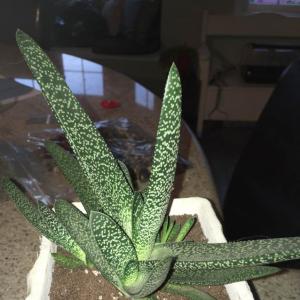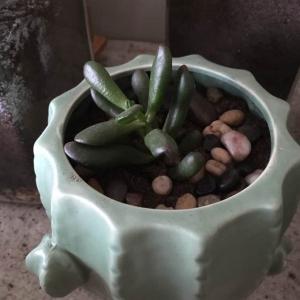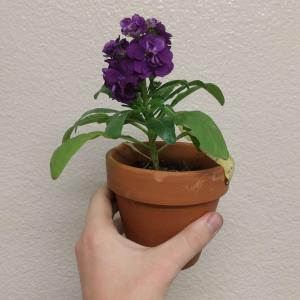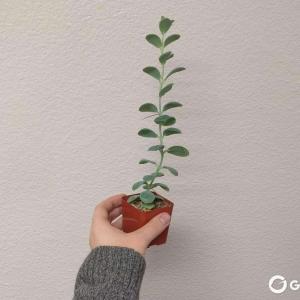文章
Miss Chen
2017年11月07日

Vine plants add depth to any garden, climbing over fences, trellises and walls. Like many vining plants, ornamental grape vines will not necessarily assume an attractive shape and climb exactly where you want them to -- even when you've got all the necessary supports in place. If you want your garden to look neat and well-tended, properly prune all ornamental grape vines to keep them under control.

Step 1
Prune ornamental grape vines while the plant is dormant, from late November to March. Late winter, January or February, is the best time for pruning.
Step 2
Identify the best-looking, sturdiest cane on the vine. All other canes should be pruned away with sharp hand shears, cut down to the base.
Step 3
Cut the top of the cane only if it is growing above the top of its support wire or structure.

Step 4
Tie the top of the cane to its support using standard twine.
Step 5
Cut away all the shoots on the cane except for three or four which are spaced widely apart.
Step 6
Remove all flower and fruit clusters from the vine in its second year of growth to make the vine stronger. Many ornamental grapes don't produce fruit, but if you are growing fruiting types as ornamentals this advice applies.
Step 7
Leave two to three canes on the vine during third-year pruning, cutting the remaining canes down so that only two to four buds remain on each.
Step 8
Locate fruit-bearing canes after the ornamental grape vine is 4 years old, pruning away all other canes and growth. Trim the remaining canes until they have six to 10 buds.

Step 1
Prune ornamental grape vines while the plant is dormant, from late November to March. Late winter, January or February, is the best time for pruning.
Step 2
Identify the best-looking, sturdiest cane on the vine. All other canes should be pruned away with sharp hand shears, cut down to the base.
Step 3
Cut the top of the cane only if it is growing above the top of its support wire or structure.

Step 4
Tie the top of the cane to its support using standard twine.
Step 5
Cut away all the shoots on the cane except for three or four which are spaced widely apart.
Step 6
Remove all flower and fruit clusters from the vine in its second year of growth to make the vine stronger. Many ornamental grapes don't produce fruit, but if you are growing fruiting types as ornamentals this advice applies.
Step 7
Leave two to three canes on the vine during third-year pruning, cutting the remaining canes down so that only two to four buds remain on each.
Step 8
Locate fruit-bearing canes after the ornamental grape vine is 4 years old, pruning away all other canes and growth. Trim the remaining canes until they have six to 10 buds.
0
0
成长记
Mohamad.hamidizade
2017年11月06日

I now added "Saculent" in my "garden"
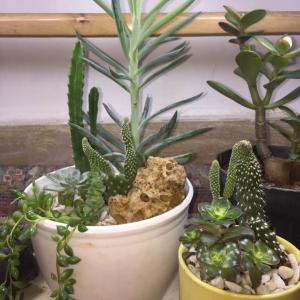

1
0
Mohamad.hamidizade:@Ueca no this is my plant 😒
Ueca:Oh my. This isn't Photoshopped, is it?
文章
Miss Chen
2017年11月06日

The seeds contained in a fresh tomato look just the same as the seeds in a seed packet bought from a garden supply store. Under the right circumstances, these seeds can grow into tomato plants for next year's garden. So this summer, before you eat the last fresh tomato from the vine, think about using it to start plants for your garden.

Hormone Inhibitors
The seeds from tomatoes are ready to germinate almost before the tomatoes are ripe. This happens because tomatoes are tropical plants; in areas where there is no winter weather, they would continue to grow and bear fruit. Since in its native habitat no extreme temperature would kill the young seedling, the seeds do not need a time of dormancy. The only inhibitor is the presence of a hormone in the gel surrounding the seed. Remove this, and the seed will usually sprout under conditions containing warmth and moisture.
Moisture
Tomato seeds need moisture to germinate. Keep them wrapped in a damp paper towel under a plastic covering to hold in the moisture. Watch the seeds for about a week, and you should see root sprouts emerge. For garden seedlings, plant the tomato seeds in a light-weight, seed-starting mix.
Warmth
Provide fresh tomato seeds with the same temperature they would have in their native environment. This is easy in the home where the normal temperature fluctuates between 69 and 75 degrees Fahrenheit. Keep seedlings indoors until the outside temperatures are in the 70s and the soil temperature is at least 65 degrees Fahrenheit.

Light
Provide bright light for the new seedlings since they need to start the process of photosynthesis quickly after germination. Once the little green leaves emerge, they need bright light as would be found in the tropics. Northern gardeners might have to supplement the light from a sunny window with grow lights, since the angle of the sun in early spring causes a less intense light.
Soil
Provide the sprouted seedlings from the fresh tomato with clean soil made from equal parts of dampened peat moss, perlite and potting soil. The inside of a tomato provides a sterile environment for the seed, and you don't want to start problems by using a soil that might be contaminated with fungi spores. Once the tomato plant matures, it can tolerate the fungi and microbial activity of the typical garden.

Hormone Inhibitors
The seeds from tomatoes are ready to germinate almost before the tomatoes are ripe. This happens because tomatoes are tropical plants; in areas where there is no winter weather, they would continue to grow and bear fruit. Since in its native habitat no extreme temperature would kill the young seedling, the seeds do not need a time of dormancy. The only inhibitor is the presence of a hormone in the gel surrounding the seed. Remove this, and the seed will usually sprout under conditions containing warmth and moisture.
Moisture
Tomato seeds need moisture to germinate. Keep them wrapped in a damp paper towel under a plastic covering to hold in the moisture. Watch the seeds for about a week, and you should see root sprouts emerge. For garden seedlings, plant the tomato seeds in a light-weight, seed-starting mix.
Warmth
Provide fresh tomato seeds with the same temperature they would have in their native environment. This is easy in the home where the normal temperature fluctuates between 69 and 75 degrees Fahrenheit. Keep seedlings indoors until the outside temperatures are in the 70s and the soil temperature is at least 65 degrees Fahrenheit.

Light
Provide bright light for the new seedlings since they need to start the process of photosynthesis quickly after germination. Once the little green leaves emerge, they need bright light as would be found in the tropics. Northern gardeners might have to supplement the light from a sunny window with grow lights, since the angle of the sun in early spring causes a less intense light.
Soil
Provide the sprouted seedlings from the fresh tomato with clean soil made from equal parts of dampened peat moss, perlite and potting soil. The inside of a tomato provides a sterile environment for the seed, and you don't want to start problems by using a soil that might be contaminated with fungi spores. Once the tomato plant matures, it can tolerate the fungi and microbial activity of the typical garden.
0
0
文章
Miss Chen
2017年11月06日

A favorite garden plant across the country, tomatoes (Solanum lycoperisum) make desirable food to more than you and your family. It's understandable because of the delicious fruit they bear, but the leaves and stems have a distinct odor and clammy feel that some people find unpleasant to smell or touch. However, many animals consume the foliage. You can tell which creature might be visiting your tomatoes by the signs animals leave, such as chew marks, droppings and footprints.

Small Rodents

Since they're nocturnal, small rodents such as mice and voles, or meadow mice, are seldom caught in the act of eating your tomatoes. Look for characteristic chew marks rodents make on fruit with the pair of large upper front teeth called incisors. Mice leave small, oblong droppings. Voles create runways in grasses that give them away. Pocket gophers eat tomato roots, causing plants to wilt and die; they construct underground burrow systems marked by mounded entrance holes.
Combating Small Rodents

You can lessen the damage to your tomato patch by mice and voles by keeping the surrounding area less attractive for them to live in. Remove brush piles, heavy vegetation, thick grasses and weeds. Since mice can climb, a simple fence won't keep them out. Protect plants by enclosing them in a wire mesh cage. Extend the cage 6 inches below ground.
Where gophers are a problem, bury galvanized 1/4-inch mesh hardware cloth 2 feet deep underground on all sides of the garden bed. Extend the wire 12 inches above ground.
Chipmunks and Squirrels

These rodents are active during the day, so you can visually identify the tomato-eaters. They usually eat fruit rather than leaves. Chipmunks have chestnut coats with black and white stripes along their backs and an eyestripe. Tree squirrels descend from their tree homes to eat many kinds of vegetables, including tomatoes. Ground squirrels inhabit burrows in the ground, in rocky places or under walls, depending on the kind of squirrel. Some, such as rock squirrels, can be larger than a tree squirrel.
Chipmunk and Squirrel Damage Control

Squirrels are among the wiliest unwelcome guests in gardens, able to overcome and climb around, under and over all sorts of barriers and preventative measures. Keep squirrels and chipmunks from tomatoes by enclosing each plant with a hardware cloth cage that extends 6 inches below ground and has an attached wire lid.
Larger Rodents

Larger rodents such as rats and woodchucks also make inroads into tomatoes. Rats leave larger versions of mouse droppings and larger incisor chew marks. They also work at night and are hard to catch in the act. Roof rats live in warmer areas of the country and often invade attics and sheds. Reduce their numbers by removing brush piles and excluding them from buildings. Keep woodchucks out by fencing tomatoes with a chicken wire fence 3 feet tall with an additional 6 inches buried in the ground. Keep fence posts to 2 feet tall so the top part of the chicken wire won't support the woodchuck's weight if it tries to climb over the fence.
Excluding Rabbits

Rabbits are nocturnal, so look for their rounded droppings and incisor chew marks. Rabbits will eat fruit and plants. Rabbits can leap with their large hind legs, but they can't jump very high. Exclude rabbits from tomatoes with a fence of 1/2-inch poultry netting around the plants. Use a 4-foot-high netting and bury the bottom 6 to 10 inches beneath the soil to prevent rabbits from digging under it.
Larger Animals

Raccoons and deer may also invade your tomatoes. Raccoons are smart, powerful, animals, and they can work around, over or under most traditional fencing or barriers. They eat fruit rather than stems or leaves. Look for their distinctive tracks, with almost hand-like front paw prints. Electric fencing is a good option to keep raccoons away from tomatoes. Use a single strand of electrified wire about 8 inches above the ground and 8 inches out from the base of an ordinary wire fence.
Deer eat tomato fruits and plants, leaving behind usually oblong, pellet-like droppings and deer tracks. For deer, exclusion is more difficult; they can jump 6-feet-tall fences. Protect individual plants or garden areas with poultry wire or woven wire fencing. In areas where the deer population is high, consider a deer fence around your entire garden.

Small Rodents

Since they're nocturnal, small rodents such as mice and voles, or meadow mice, are seldom caught in the act of eating your tomatoes. Look for characteristic chew marks rodents make on fruit with the pair of large upper front teeth called incisors. Mice leave small, oblong droppings. Voles create runways in grasses that give them away. Pocket gophers eat tomato roots, causing plants to wilt and die; they construct underground burrow systems marked by mounded entrance holes.
Combating Small Rodents

You can lessen the damage to your tomato patch by mice and voles by keeping the surrounding area less attractive for them to live in. Remove brush piles, heavy vegetation, thick grasses and weeds. Since mice can climb, a simple fence won't keep them out. Protect plants by enclosing them in a wire mesh cage. Extend the cage 6 inches below ground.
Where gophers are a problem, bury galvanized 1/4-inch mesh hardware cloth 2 feet deep underground on all sides of the garden bed. Extend the wire 12 inches above ground.
Chipmunks and Squirrels

These rodents are active during the day, so you can visually identify the tomato-eaters. They usually eat fruit rather than leaves. Chipmunks have chestnut coats with black and white stripes along their backs and an eyestripe. Tree squirrels descend from their tree homes to eat many kinds of vegetables, including tomatoes. Ground squirrels inhabit burrows in the ground, in rocky places or under walls, depending on the kind of squirrel. Some, such as rock squirrels, can be larger than a tree squirrel.
Chipmunk and Squirrel Damage Control

Squirrels are among the wiliest unwelcome guests in gardens, able to overcome and climb around, under and over all sorts of barriers and preventative measures. Keep squirrels and chipmunks from tomatoes by enclosing each plant with a hardware cloth cage that extends 6 inches below ground and has an attached wire lid.
Larger Rodents

Larger rodents such as rats and woodchucks also make inroads into tomatoes. Rats leave larger versions of mouse droppings and larger incisor chew marks. They also work at night and are hard to catch in the act. Roof rats live in warmer areas of the country and often invade attics and sheds. Reduce their numbers by removing brush piles and excluding them from buildings. Keep woodchucks out by fencing tomatoes with a chicken wire fence 3 feet tall with an additional 6 inches buried in the ground. Keep fence posts to 2 feet tall so the top part of the chicken wire won't support the woodchuck's weight if it tries to climb over the fence.
Excluding Rabbits

Rabbits are nocturnal, so look for their rounded droppings and incisor chew marks. Rabbits will eat fruit and plants. Rabbits can leap with their large hind legs, but they can't jump very high. Exclude rabbits from tomatoes with a fence of 1/2-inch poultry netting around the plants. Use a 4-foot-high netting and bury the bottom 6 to 10 inches beneath the soil to prevent rabbits from digging under it.
Larger Animals

Raccoons and deer may also invade your tomatoes. Raccoons are smart, powerful, animals, and they can work around, over or under most traditional fencing or barriers. They eat fruit rather than stems or leaves. Look for their distinctive tracks, with almost hand-like front paw prints. Electric fencing is a good option to keep raccoons away from tomatoes. Use a single strand of electrified wire about 8 inches above the ground and 8 inches out from the base of an ordinary wire fence.
Deer eat tomato fruits and plants, leaving behind usually oblong, pellet-like droppings and deer tracks. For deer, exclusion is more difficult; they can jump 6-feet-tall fences. Protect individual plants or garden areas with poultry wire or woven wire fencing. In areas where the deer population is high, consider a deer fence around your entire garden.
0
0




